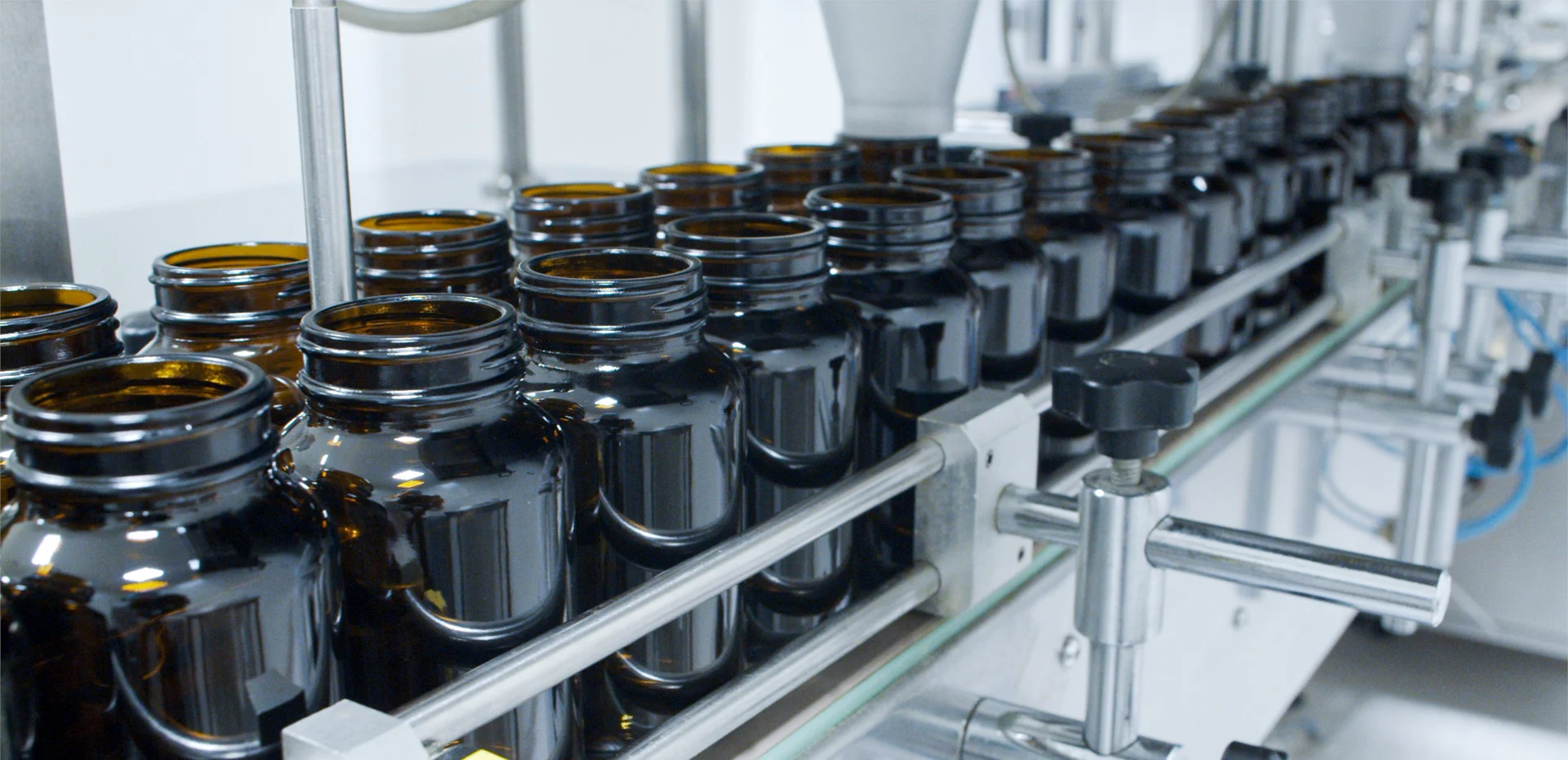The wellness industry is booming, and you’re thinking about jumping in. You see the potential, you have the passion for health, and the idea of creating your own supplement brand feels less like a dream and more like a plan. But where do you even begin? It’s a path filled with complex regulations, fierce competition, and a dizzying number of choices.

Frankly, launching a supplement company is not for the faint of heart. But with the right map, it’s an incredibly rewarding journey. This isn’t just another checklist. This is the comprehensive, no-fluff guide I wish I had when I started. We’ll walk through every single stage, from that first spark of an idea to scaling a brand that people trust.
Why Start a Supplement Company? Understanding the Opportunity
Let’s get one thing straight: the supplement market is massive, projected to surpass $200 billion globally in the next few years. Consumers are more health-conscious than ever, actively seeking products that support their specific wellness goals, from athletic performance to cognitive enhancement. This creates a genuine opportunity for new, innovative brands to make their mark. The key isn’t to compete with the giants, but to find a dedicated audience and serve them better than anyone else.

Step 1: Find Your Niche and Define Your ‘Why’
Before you ever think about ingredients or bottle designs, you need to answer two fundamental questions: Who are you serving, and why should they care?
The Dangers of a “Me-Too” Brand
The fastest way to fail is to launch a generic “multivitamin for everyone.” The market is littered with these. Your mission is to find a specific niche. Think deeper. Instead of “women’s health,” what about “postpartum recovery supplements for new moms”? Instead of “sports nutrition,” what about “hydration and recovery formulas for endurance cyclists”? Specificity is your superpower.

How to Identify a Profitable Niche
Look for a group of people with a shared, unsolved problem.
- Who is your audience? Are they busy professionals, vegan athletes, biohackers, or people managing a specific health condition?
- What is their pain point? Are they struggling with sleep, looking for clean pre-workout fuel, or seeking better focus during the workday?
- How can you be the solution? Your product shouldn’t just be a supplement; it should be the answer to their specific problem.
Crafting Your Unique Brand Mission
Your ‘why’ is your story. It’s what connects you to your customers on an emotional level. Were you a personal trainer who saw clients struggle with low energy? Did you discover a unique ingredient that transformed your own health? This mission will guide every decision you make, from your formula to your marketing copy.
Step 2: Master the Legal Maze: FDA, FTC, and Business Formation
This is the step that intimidates most aspiring founders, but it’s non-negotiable. Getting this right from day one will save you from catastrophic headaches later.
Setting Up Your Business Entity
First, protect yourself. Operating as a sole proprietor is risky. Forming a Limited Liability Company (LLC) or an S-Corporation separates your personal assets from your business liabilities. I strongly recommend consulting with a lawyer or using a reputable online service to get this set up correctly.
Understanding FDA Regulations
The U.S. Food and Drug Administration (FDA) doesn’t “approve” dietary supplements before they go to market, but it absolutely regulates them. Your entire operation must comply with:
- DSHEA (Dietary Supplement Health and Education Act): This is the foundational law governing supplements.
- GMP (Good Manufacturing Practices): Your manufacturer must be GMP-certified. This ensures your product is produced consistently and meets quality standards.
- Labeling: The FDA has strict rules about what must appear on your label, from the supplement facts panel to the net quantity of contents.
FTC Rules: Making Claims You Can Back Up
While the FDA governs what’s in your product, the Federal Trade Commission (FTC) governs how you advertise it. Any claim you make (“improves memory,” “boosts energy”) must be substantiated by competent and reliable scientific evidence. You cannot claim your product treats, cures, or prevents any disease. Period.

Do You Need a License to Sell Supplements?
Generally, you don’t need a specific federal license to sell supplements. However, you will need standard business licenses and permits required by your state and city. The requirements vary, so check with your local small business administration.
Step 3: Develop a Winning Product Formula
Now for the fun part: creating the actual product. You have two primary paths here.
Private Label vs. Custom Formulation: Which is Right for You?
- Private Label (or White Label): You choose from a manufacturer’s catalog of pre-made, tested formulas and put your own label on it. It’s faster, cheaper, and has a lower minimum order quantity (MOQ). This is a great way to test the market.
- Custom Formulation: You work with a formulator or chemist to create a completely unique product from scratch. It’s more expensive, takes longer, and has higher MOQs, but it gives you a proprietary formula that no one else has. This is the path to building a truly unique brand.

Sourcing High-Quality Ingredients
Whether private label or custom, the quality of your ingredients is paramount. Your manufacturer should provide a Certificate of Analysis (CofA) for every single ingredient, verifying its purity and potency. Don’t be afraid to ask tough questions about their sourcing.
The Importance of Third-Party Testing
To build ultimate trust, invest in third-party testing. This means sending a sample of your finished product to an independent lab to verify that it contains what the label says it contains and is free of contaminants. Displaying that third-party certification on your website is a powerful marketing tool.
Step 4: Write a Bulletproof Business Plan
A business plan isn’t just for investors; it’s your strategic roadmap. It forces you to think through every aspect of your business.
Key Components of Your Supplement Business Plan
- Executive Summary: A snapshot of your entire plan.
- Company Description: Your mission, vision, and legal structure.
- Market Analysis: Your niche, target audience, and competitor research.
- Product Line: Details on your initial product(s).
- Marketing & Sales Strategy: How you’ll reach your customers.
- Financial Projections: Startup costs, pricing strategy, and projected revenue.
How to Accurately Forecast Your Startup Costs
Be brutally realistic. Your costs will include business formation, formulation/inventory, packaging design, website development, marketing, and insurance. A common mistake is underestimating the marketing budget needed to get off the ground. A good rule of thumb is that your initial inventory cost might only be 30-40% of your total startup capital.
Step 5: Choose the Right Supplement Manufacturer
Your manufacturer is arguably your most important partner. A bad one can destroy your brand before it even starts.
What to Look For in a Manufacturing Partner
- GMP-Certification: This is non-negotiable. Ask to see their certificate.
- Transparency: They should be open about their sourcing, testing, and processes.
- Communication: Are they responsive? Do they answer your questions clearly?
- Expertise: Do they have experience with the type of supplement you want to create?
A Checklist for Vetting Potential Manufacturers
- Verify their GMP certification.
- Request sample products.
- Ask for references from other brands they work with.
- Clarify their process for ingredient sourcing and testing.
- Understand their lead times and production capacity.
- Get a detailed, itemized quote with no hidden fees.

Step 6: Build a Memorable and Trustworthy Brand
People don’t buy products; they buy brands. Your brand is the feeling and perception people have about your company.
Naming Your Company and Designing Your Logo
Your name should be easy to remember, easy to spell, and hint at what you do. Before you fall in love with a name, check if the domain and social media handles are available. Invest in professional logo and packaging design. Your product will be sitting on a digital shelf next to hundreds of others; it needs to stand out.
Creating Compliant and Compelling Packaging Labels
Your label must be 100% FDA compliant. But it also needs to be your #1 salesperson. It should clearly communicate the product’s benefits (in a compliant way), showcase key ingredients, and reflect your brand’s personality.
Step 7: Set Up Your E-commerce Storefront
Your website is your digital flagship store. It needs to be professional, trustworthy, and easy to navigate.
Choosing the Best Platform
For 99% of new supplement brands, Shopify is the answer. It’s built for e-commerce, it’s scalable, and it has a massive ecosystem of apps to handle everything from subscriptions to email marketing.
Essential Pages for Your Supplement Website
- A compelling Homepage
- An “About Us” page that tells your story
- Detailed Product Pages with beautiful imagery and transparent information
- A blog for content marketing
- An easily accessible FAQ page
- Clear contact information
Step 8: Craft a Multi-Channel Marketing Strategy
You’ve built the brand and the product; now you need to get it in front of people.
Content Marketing and SEO for Long-Term Growth
Start a blog and write helpful articles that answer your target audience’s questions. This is a long-term play, but it builds trust and attracts free, organic traffic from Google over time.
Leveraging Social Media and Influencer Marketing
Find out where your target audience hangs out online (Instagram, TikTok, Facebook groups) and be there. Partner with micro-influencers who genuinely love your product. Their authentic endorsement is often more powerful than a flashy ad.
Paid Advertising Within FTC Guidelines
Paid ads can provide an immediate traffic boost, but be extremely careful with your ad copy. All claims must be FTC-compliant. Focus on your brand’s story and the lifestyle benefits of your product rather than making specific health claims.
Step 9: Plan Your Logistics: Warehousing and Fulfillment
How will your product get from the warehouse to your customer’s doorstep?
In-House vs. Third-Party Logistics (3PL)
- In-House: You store, pack, and ship orders yourself. It’s cheaper at the very beginning but becomes overwhelming quickly.
- 3PL: You partner with a fulfillment center that stores your inventory and handles all your shipping. It costs more, but it allows you to focus on growing your business. For most brands, this is the goal.

Step 10: Launch and Grow Your Supplement Brand
The launch is just the beginning. The real work is in building momentum and scaling intelligently.
Your Pre-Launch, Launch, and Post-Launch Checklist
- Pre-Launch: Build an email list, tease your product on social media, and engage with potential customers.
- Launch: Announce your brand to the world. Offer an introductory discount to encourage first-time buyers.
- Post-Launch: Aggressively seek reviews and testimonials. Analyze your sales data and double down on what’s working.
Scaling your business means listening to your customers. What other products do they want? How can you improve their experience? From that first product, you can build an entire line that serves your niche audience and fosters a loyal community.
Frequently Asked Questions (FAQ)
How much does it really cost to start a supplement company?
It varies wildly, but a realistic minimum budget for a private label launch is between $5,000 and $15,000. This covers initial inventory, business setup, branding, and a small marketing budget. A custom formula can easily push the startup cost to $25,000 or more.
Can I make my own supplements at home?
No. For commercial sale, you must use a GMP-certified facility. Making supplements at home is not compliant with FDA regulations and poses significant safety and liability risks.
Are supplement companies regulated by the FDA?
Yes. While the FDA does not pre-approve supplements, it strictly regulates them through Good Manufacturing Practices (GMP), labeling requirements, and facility inspections. The industry is regulated, and compliance is mandatory.


